Advantages of ultra-fine jet mill
Ultra-fine jet mill is a kind of equipment for producing ultra-fine powder. It is the equipment with smaller fineness on the market at present. It is suitable for building materials, chemicals, fillers, plastics, papermaking, coatings and other industries.
After the large block material is crushed to the required particle size by the hammer crusher, it is sent to the silo of the ultra-fine jet mill by the elevator, and fed into the main machine evenly and continuously through the feeding equipment. Under the action of centrifugal force, the material is scattered around from the bulk material disc and falls into the grinding chamber, where it is impacted, rolled and ground by the grinding rollers. Ultra-fine grinder has the following characteristics.
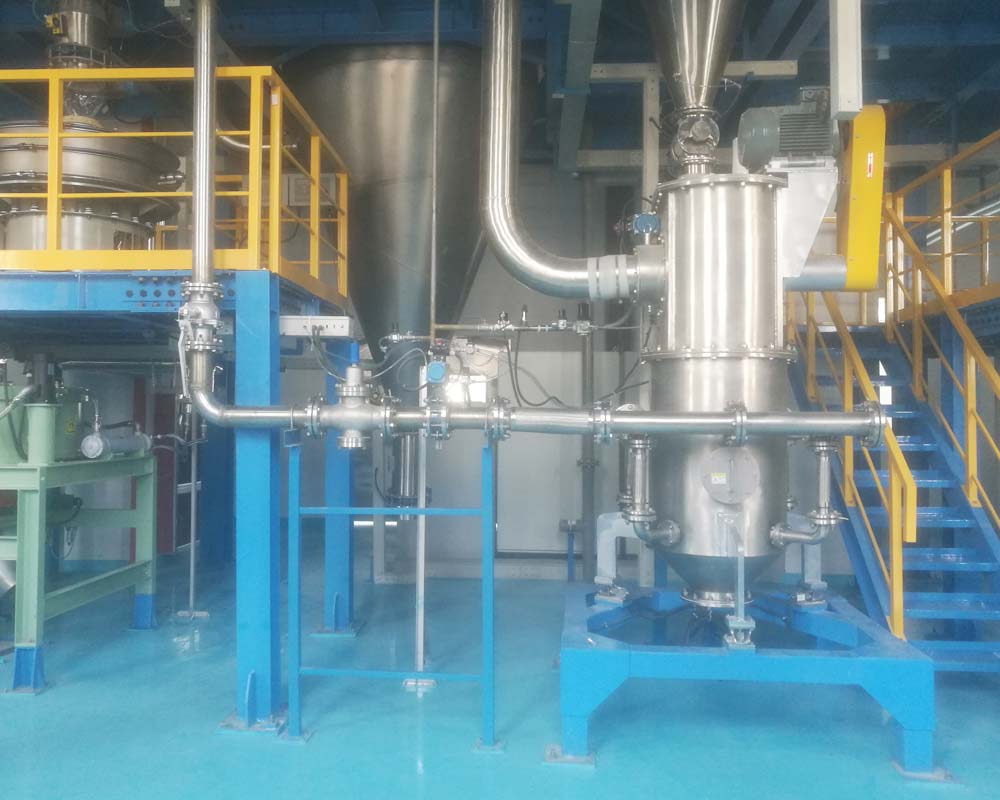
- High production efficiency
The new design of the grinding roller grinding ring improves the grinding efficiency. The results show that when the particle size and power of the finished product are the same, the efficiency of the stirring mill is increased by 40%, which is more than double the output of the ball mill, but the energy consumption of the system is only 30% of the airflow consumption.
- Low operating cost
Grinding rollers and grinding rings are forged with special materials, which improves the utilization rate. Compared with impact grinder and eddy current grinder, the finished product has the same fineness, and the service life of vulnerable parts is extended by 2-3 times. When processing calcium carbonate and calcite, the service life can reach 2-5 years.
- The product is in good condition
The cage type powder separator effectively improves the powder selection accuracy, and can configure the multi-cage powder separator according to the user's requirements such as output, fineness, and sieving rate. The product fineness can be adjusted arbitrarily between 325 meshes and 2500 meshes, and the single product fineness can reach d97≤5 microns.
- Continuous production process
Since there is no movable bearing and no screw in the grinding chamber, there is no problem that the bearing and its seal are easily damaged, and there is no problem that the screw is easy to loosen and damage the machine. It is externally lubricated with the main shaft, which can realize non-stop lubrication in the external machine, and non-stop production for 24 hours.
- Wide range of application
It can be widely used for grinding more than 100 kinds of materials such as calcite, chalk, limestone, dolomite, kaolin, bentonite, talc, mica, graphite, fluorite, phosphate rock, potassium ore, pumice and so on. In addition, according to materials, output, fineness and other aspects, combined with industry experience, multi-scheme configuration can be carried out to meet the needs.
- Clean and environmentally friendly
Using high-efficiency pulse dust collector, the complete set of equipment has no dust pollution, and is equipped with silencing device and anechoic chamber to reduce environmental noise.
Characteristics and typical models of jet mill
With the rapid development of the global economy, the powder industry is booming, and powder equipment, especially ultra-fine grinding equipment, plays a key role in it. The jet mill is one of the most common ultra-fine grinding equipment.
Jet mill, also known as jet mill, jet mill or fluid energy mill. The dry and oil-free compressed air or superheated steam is accelerated into supersonic airflow through the Laval nozzle. The ground material reaches the classification area with the air flow, the material that meets the required fineness is finally collected by the collector, and the material that does not meet the requirement is returned to the grinding chamber to continue grinding until it reaches the required fineness and is collected.
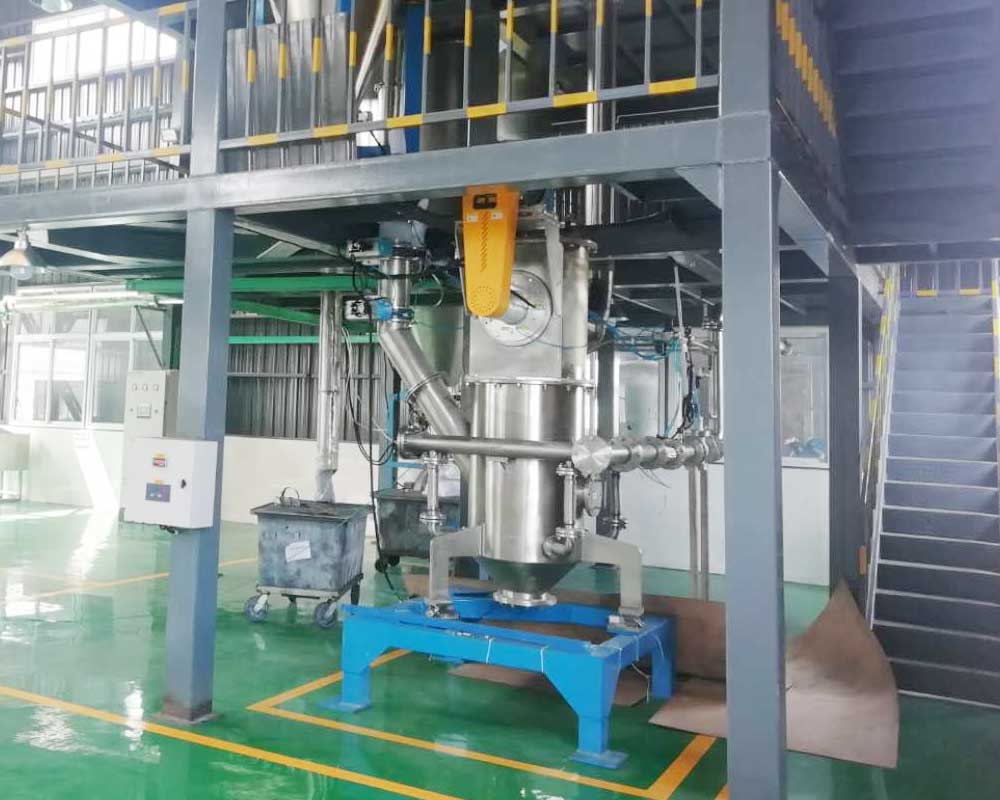
Features of jet mill
Jet mill is widely used for ultra-fine grinding of non-metallic minerals, chemical raw materials, health food, rare earth, etc. below medium hardness such as talc, marble, kaolin, etc.; it can also be used to grind low melting point and heat sensitive materials.
- Advantages
The products processed by the jet mill have the characteristics of high purity, high activity, good dispersibility, and smooth particle surface. In addition, the production method is dry production, which does not require dehydration and drying of materials, so it is very popular in the grinding industry.
- Disadvantages
The equipment manufacturing cost is high, the one-time investment is large, the energy consumption is high, and the powder processing cost is high; it is difficult to produce sub-micron products; the single-machine processing capacity of the jet mill is small, and it cannot meet the needs of large-scale production. In addition, the processing accuracy of the equipment The wear problem with the material is still a big problem.
Classification of jet mills
According to the way the particles are ground, it can be divided into single air flow type and multi-air flow type; according to the type of fluid medium, it can be divided into high-speed air flow type and hot steam flow type; It is divided into flat jet mill, circulating jet mill, target jet mill, counteract jet mill, and fluidized bed jet mill. Among them, the fluidized bed jet mill has obvious advantages and represents the mainstream direction of the development of jet mill equipment.
- Fluidized bed jet mill
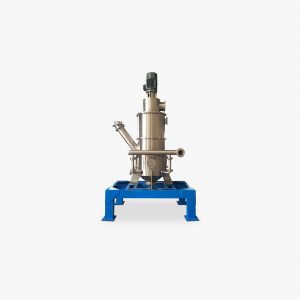
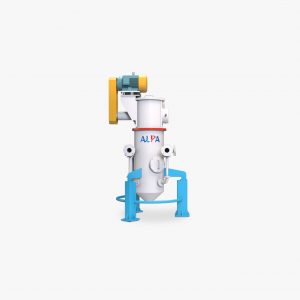
It is mainly composed of grinding nozzle, grading rotor, grading shaft air seal device, discharge pipe air seal device, discharge pipe, grading motor, feeding device and other parts. Fluidized bed jet mill has many advantages, such as high crushing efficiency, low energy consumption, light wear and less pollution, small equipment size, small footprint, high degree of automation, low noise, large production capacity, and suitable for large-scale production. The current ultrafine grinding equipment is widely used.
- Horizontal disc jet mill
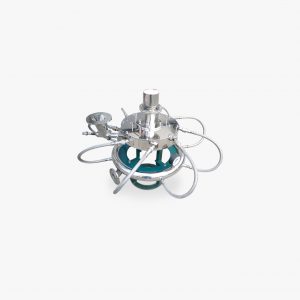
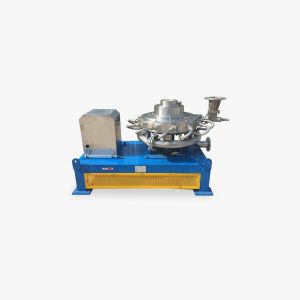
Horizontal disc jet mill, also known as flat jet mill, is the earliest jet mill in industry. It is mainly composed of a feeding system, an air intake system, a grinding-classification and a discharging system. This jet mill is mainly impact grinding, grinding and shredding at the same time, and has the function of self-classification. The structure is simple, the operation is simple, and it has the function of automatic classification. If the hardness of the material to be ground is high, the material will be damaged due to the high-speed movement of the airflow and the inner wall of the grinding chamber, which will cause severe friction, which will also cause a certain degree of pollution to the product.
- Circulating tubular jet mill
The main grinding parts of the circulating tubular jet mill are the feeding ejector and the grinding chamber. The main machine is simple in structure and easy to operate; it has automatic grading function while grinding; the main machine is small in size and large in production capacity; the product fineness is good, up to 3~0.2μm. The impact and wear of the air flow and the material on the inner wall of the tube are too serious, so it is not suitable for the refinement of materials with higher hardness. The grinding efficiency is the lowest among all types of jet mills, and the energy consumption is the largest.
- Jet mill
Jet jet mill, also known as reverse jet mill, is a device in which materials collide with themselves in supersonic airflow to achieve ultra-fine grinding. The production capacity is large, which avoids the wear of the particles on the pipe wall and the pollution of the powder particles by the pipe wall material, and can produce ultra-fine powder with high material hardness. The structure is complex, the volume is huge, and the energy consumption is high, and the gas-solid mixed flow still has certain wear on the grinding chamber and pipes.
- Target jet mill
Target jet mill, also known as single jet jet mill, is a device that makes materials impact fixed or movable target plates of various shapes at high speed for grinding. Simple and easy to operate; large grinding force and high grinding efficiency, especially for the grinding of low melting point, heat-sensitive materials and high molecular polymers. The product is thick and the energy consumption is large; the high-speed moving material particles and air flow have a strong erosion effect on the target plate, and the target plate is seriously worn, which will cause product pollution.
All in all, there are many types of ultra-fine jet milling equipment, and there are obvious differences in the structure of each type of equipment, with corresponding advantages and disadvantages. In the future, the development trend of ultra-fine jet mill equipment will focus on: increasing the output of a single machine and reducing the energy consumption per unit product; improving the product fineness and strengthening the crushing limit of the equipment; online control of product fineness and particle size distribution.
Article source: China Powder Network
The role of jet mill in pharmacy & fine chemical industry
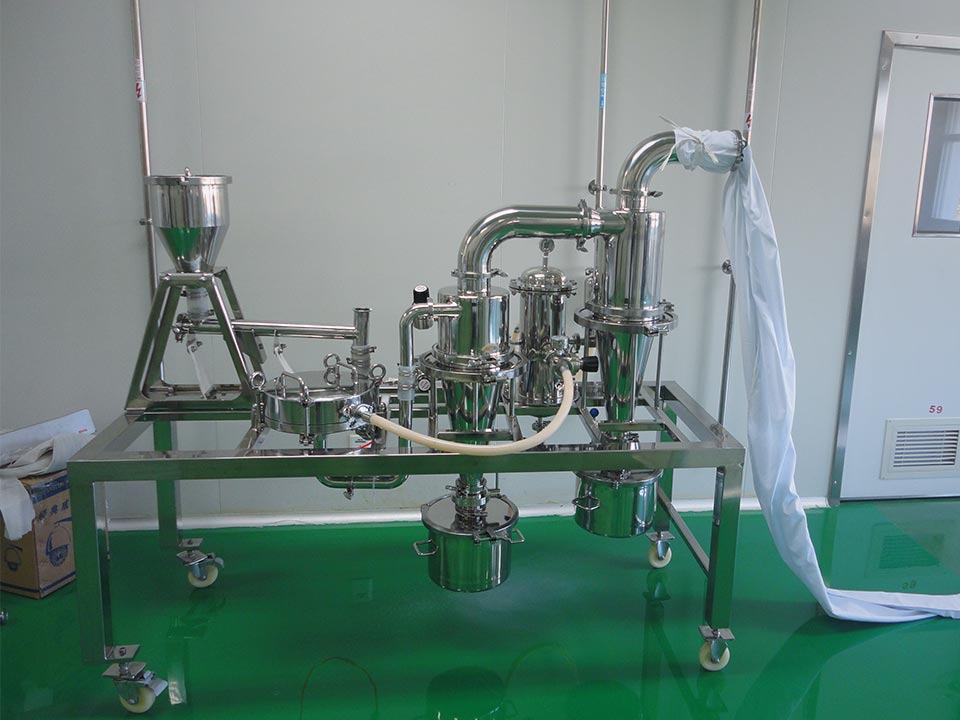
In the modern industry with increasingly sophisticated technology, especially in pharmaceuticals and fine chemicals, ultra-fine grinding is an extremely important and indispensable link. Among them, jet mills are the preferred equipment in the industry, due to the principles and characteristics of the equipment. The following advantages:
1. High product purity: This is because the principle of the jet mill is to use compressed air to bring animal materials to collide and grind by itself, and the compressed air is processed by a cold dryer and a precision filter, and there is no other media to contact and grind. Especially when grinding materials with higher hardness, a ceramic-lined grinding cavity can be used, so no other impurities participate in the grinding.
2. Energy saving and high product efficiency: In the jet mill system, the efficiency of the jet mill is higher than other grinding equipment under the same power consumption.
3. Uniform particle size distribution of the product: Under the condition of controlling the feeding speed and the rotating speed of the grading wheel (fluidized bed jet mill), the particle size of the jet mill tends to a normal distribution.
4. Cryogenic grinding: The temperature of the compressed air, the medium used by the jet mill, is much lower than normal temperature after passing through the cold dryer. This ensures that the grinding process belongs to low temperature grinding, so it is especially suitable for the grinding of heat-sensitive materials.
Equipment composition of jet mill production line
The air source is the driving force for the grinding process of the jet mill. The requirements for compressed air can be between 0.7-0.8MPa, and the pressure can be kept stable, otherwise the quality of the product will be affected. Secondly, the gas quality is required to be clean and dry, and compressed air should be purified to remove water, oil mist, and dust in the gas, so that the material is not polluted, and it is suitable for the grinding of materials with high purity requirements.
The raw material supply is to lift the raw materials into the raw material silo with a hoist, and then send the raw materials into the grinding chamber of the jet mill through the feed valve. This machine has strong adaptability to the particle size of the materials, and generally requires 325 mesh raw materials. The speed of the raw material conveyor is automatically controlled to keep the mixing concentration of raw materials and air in the grinding chamber relatively stable. Two pairs of nozzles are installed symmetrically in the grinding chamber. When the compressed air passes through the nozzles, a supersonic airflow is formed, which accelerates and collides with the animal materials to pulverize the materials into ultra-fine powder. The grinding effect is related to the shape of the inner diameter of the nozzle, distance, symmetry and the mixing concentration of the material and air. The shape of the inner diameter of the nozzle determines the speed and distance at which the speed of sound is formed, and determines the acceleration distance of the material. Speed, raw material and air mixing concentration also affect product size and output.
The classification is carried out by a high-speed rotating classification wheel. The grading wheel is like a round "iron bucket", the center of the bottom is fixed on the main shaft directly connected to the motor, and it is driven by the motor to rotate at high speed. The opening is opposite to the pipe entrance of the micro powder collection system, and a certain gap is maintained. The gap cannot be too large, otherwise the unsorted coarse powder enters the pipe of the micro powder collection system from the gap and affects the product quality. In order to prevent such incidents from happening, air seal treatment is carried out at the gap. The gap between the blades of the classifying wheel is a channel for sorting fine powder. The ground fine powder floats with the airflow. Because of its small particle size, the ultrafine powder can enter the dust collector through the gap between the blades. Under the centrifugal force of the classifying wheel, the larger particles splash to the outer wall and then fall to be ground again. Adjust the rotation speed of the classification wheel to obtain products with different particle sizes.
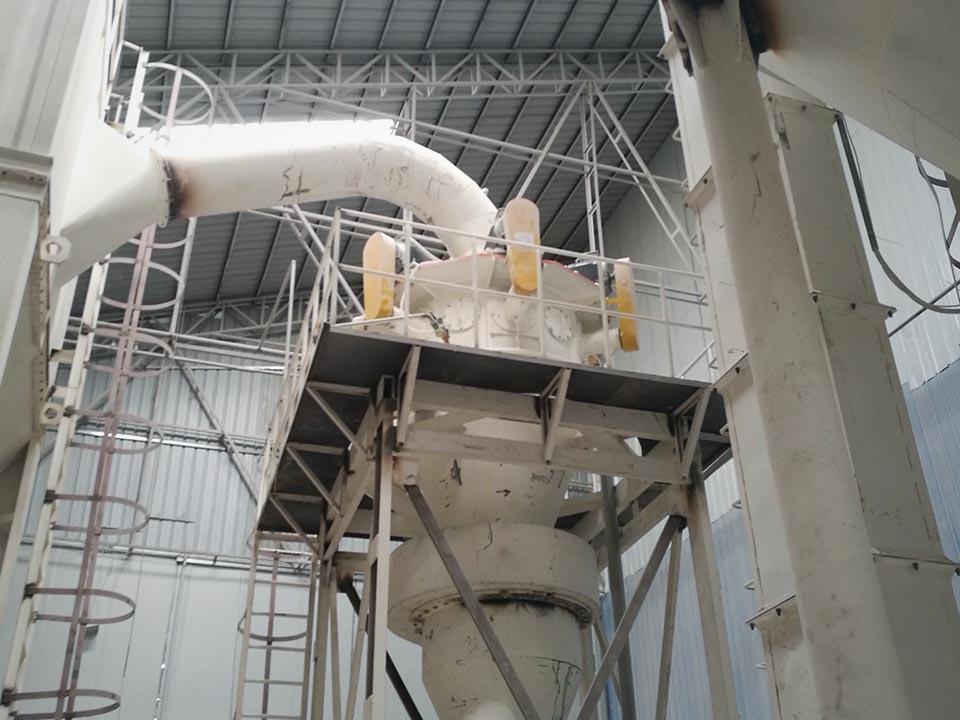
For the control of the mixing concentration of materials and air in the grinding chamber, capacitive material density control switches or sensors can be used. This machine uses the current of the drive motor to control. This control method is simple, feasible and easy to control. When the mixing concentration of materials and air increases, the density of dust floating with the airflow increases, and the dust hitting the classifying wheel increases, which increases the current of the drive motor; on the contrary, the current of the drive motor decreases. Using the size of the motor current to control the amount of conveyed materials can keep the mixing concentration of materials and air stable. When the driving current increases, the conveying will be stopped immediately, so that the powder and the conveying can maintain a dynamic balance to ensure the stability of product quality.
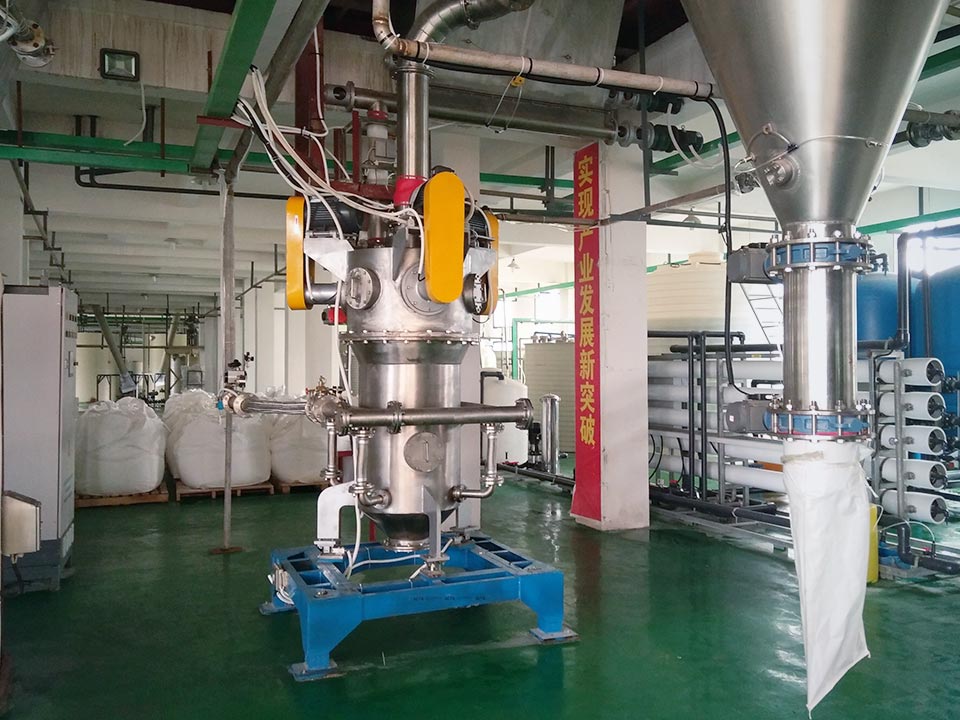
The powder collection system consists of a cyclone separator and dust collection. The ultra-fine powder enters the cyclone separator through the sealed pipe, the airflow rotates in the cyclone separator, and the ultra-fine powder is thrown out and landed, discharged by the discharge system and packaged to be the finished product. The cyclone separator can be used in one or two stages. Some dust from the air flow from the cyclone separator enters the dust collector, and is filtered through a cloth bag. The exhaust gas is drawn out under the action of the induced draft fan, and the dust content is very small. In order to prevent these dusts from being discharged into the atmosphere and polluting the environment, we also add a set of dust filters to recover the dust, and the exhaust gas is finally discharged into the atmosphere. The entire production process is automatically controlled by the control cabinet. The control cabinet supplies the entire production power (not including the gas supply power). It can also control parameter adjustment, automatic start and stop, automatic protection, fault alarm and automatic shutdown to ensure the safe operation of equipment and Stable product quality.
Advantages of jet mill
A good grinding effect is the advantage of the jet mill, but the problems of high cost, high energy consumption, and easy abrasion of the equipment have always been the weaknesses of the jet mill. In recent years, with the continuous improvement of the technical level of the industry, the quality and performance of the products have been significantly improved, and the jet mill has a good market application prospect.
At present, the main objective of the development of the grinding industry in the world is to increase the fineness while increasing the output and expand the scope of application, such as the grinding of materials with high fibrous, high hardness, high toughness, viscous and elasticity, low-temperature grinder, inert gas protection Grinding machines are also the focus of many manufacturers' research and development.
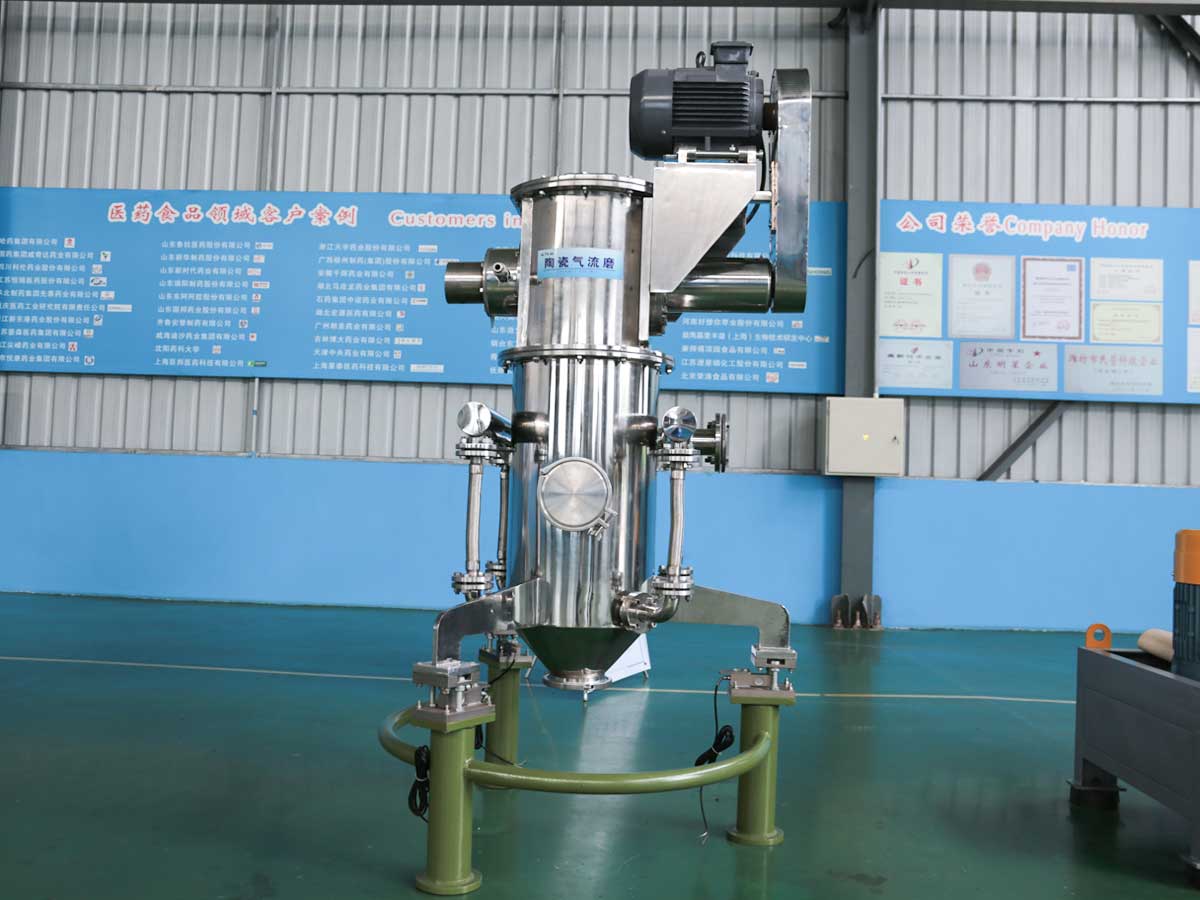
Grinding is a very important part of the pharmaceutical production process, and the grinding equipment should not be underestimated. Among them, jet mills are used in almost all fine processing industries, such as medicine, food, chemical industry, etc., and occupy a special position in many specific powder fields.
The jet mill grinds the material through the impact between the material particles under the action of high-speed airflow, and the impact, friction, and shearing of the airflow on the material and the impact, friction, and shear between the material and other parts. It has the following main characteristics:
1. The grinding temperature is low, and it can grind materials with heat sensitivity and low melting point. When the gas is sprayed from the nozzle and expands adiabatically, the gas will cool itself, thereby offsetting the heat generated by the collision and friction of the material.
2. Short production cycle and high powder collection rate. Due to high-speed collision and closed grinding, the probability of collision between materials is high, and there is no leakage of dust.
3. Products with high purity (less pollution) and uniform particle size distribution can be obtained.
4. For some materials that have to be wet-milled, it can also be dry-milled by jet milling to obtain uniform and fine powder.
5. A variety of combined operations can be realized, and the drying operation can be realized at the same time as grinding.
It can be seen from the above that the jet mill plays an important role in the grinding process of the pharmaceutical industry, and with the continuous development of the pharmaceutical industry, the status of the jet mill will continue to rise.
The extensive processing methods in the past can no longer meet the requirements of traditional Chinese medicine production. Traditional grinders have certain limitations in many aspects such as powder particle size, powder extraction rate, powder collection rate, and preservation of effective ingredients. Air jet milling technology will provide a new way to develop ultra-fine Chinese medicine powder with better curative effect and better varieties.
In the future development road, if the airflow grinding technology is introduced into the processing link of Chinese medicine, a brand-new grinding technology can be created, which not only enriches the content of traditional processing, but also brings a new look to the processing and production of Chinese medicine. It will become the growth point of new technologies in the traditional Chinese medicine industry.
As an important grinding equipment, the jet mill requires continuous technological innovation to improve product performance, improve product structure, and increase the grinding particle size and purity. The research and development of ultra-fine jet mills will be a good choice.
Advantages of jet mill
The structure of the jet mill: It is mainly composed of a grinding chamber, a nozzle orifice, a material outlet, an air flow outlet, a compressed air inlet, and a classification zone. The flat jet mill has a wide range of applications due to its simple structure and easy manufacturing.
Working principle: The compressed air or superheated steam is transformed into high-speed air flow through the nozzle. When the material is fed into the crushing chamber through the feeder, it is sheared by the high-speed air flow. The strong impact and intense friction make the material grind into ultra-fine products. The power engine and grinder are smooth and not prominent. Do not change the pulley at will, lest the speed is too high to cause the grinding chamber to burst, or the speed is too low, which will not affect the working efficiency of the grinder. The jet mill should be idling for 2-3 minutes after starting, and there should be no abnormal phenomena before the feeding operation. Pay attention to the working status of the grinder during the operation, feed evenly, prevent clogging, and do not overload the operation for a long time. If there is vibration, noise, bearing and body temperature too high, the appearance of spraying should be stopped immediately, and the operation should be continued after troubleshooting. With the development of society, some devices have made great breakthroughs in order to play a better role. The jet mill has a good effect on the grinding target and occupies a special position. In the process of operation, the use of the jet mill should pay attention to certain operations, which cannot meet the production needs and work overload. Therefore, we should pay attention to the maintenance of the jet mill to ensure its efficiency.

Advantages of jet mill
1. Non-heating, especially suitable for ultra-fine grinding of heat-sensitive materials. In addition, air can be replaced with inert gas, which is suitable for grinding inflammable and explosive materials.
2. The pollution is very small. Since the grinding principle is the collision grinding of the material itself, compared with other grinding forms, the method of blade or ball grinding will be introduced into other grinding media for comparison. The jet mill is a pulverizing process with minimal pollution, especially suitable for industries such as medicine and food.
3. It is easy to clean, and the internal transmission of airflow grinding is smaller than other ultrafine grinding machines. In particular, the spiral airflow grinder is simple in structure, easy to clean, has no dead ends, and can be used as a sterile medicine grinder.
The fineness and purity of the jet mill are the main performance "highlights"
The jet mill has various properties such as winnowing type, no screen, no net, uniform particle size, etc., and the production process is continuous. This machine has reached the international advanced level and is widely used in the grinding of materials in the pharmaceutical, chemical, food and other industries. It is suitable for the grinding of various non-metallic minerals, cement, building materials and other brittle materials. It can also be used for some materials difficult to achieve grinding fineness. The jet mill adopts purified and dry compressed gas, which is jetted into the grinding chamber at a high speed through a special supersonic nozzle. The air flow carries the material at high speed, causing strong collision, friction and shearing between the material and the material to achieve the purpose of grinding.The ground material rises into the classification chamber, the material that meets the particle size requirements passes through the forced impeller classifier, and the particles that do not meet the particle size requirements return to the grinding chamber to continue grinding.

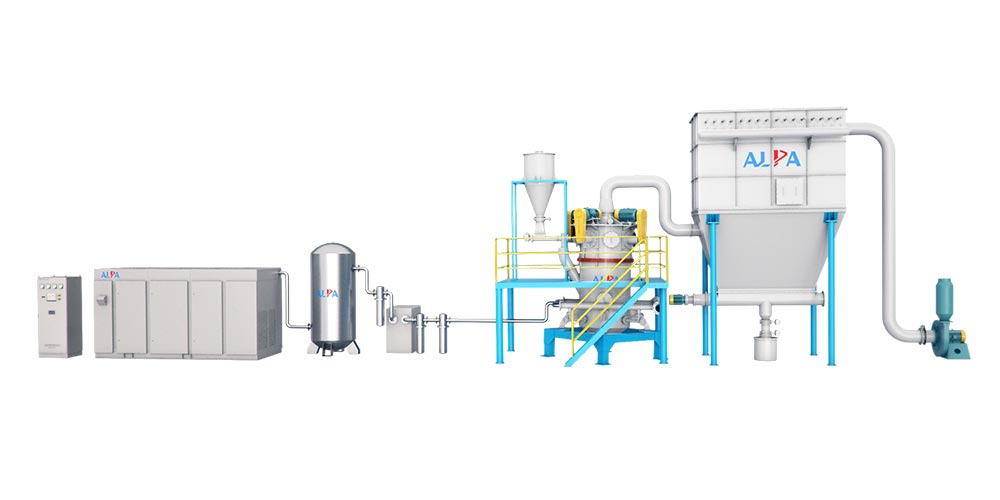
The entire production process is fully enclosed and continuous operation, no dust pollution, and the air is purified after dust removal and filtration. The grinding principle of the jet mill determines the typical characteristics of the machine such as wide application range, fine particle size and high product purity. It can be matched with inert gas to form a new type of inert gas closed-circuit protection grinding production line, which is widely used in flammable, explosive, easy to oxidize, etc. grinding processing of materials.
The reason why the jet mill is favored by the majority of users is mainly because it has many "highlights", one is "fineness", as the name suggests is how fine the jet mill can grind, and the application requirements of various industries are different, how Achieving the established fineness is the primary consideration when designing and manufacturing. Various materials require different grinding fineness, depending on the applicable industry and the requirements for material grinding. The second is "purity", which requires no pollution during the grinding process and the original composition should be maintained. Many materials will have some chemical effects during grinding due to temperature, humidity and other reasons, especially in the pharmaceutical industry of Chinese herbal medicine grinding, this is even more important. Therefore, the temperature, humidity and other conditions of the material must be considered in the design. The airflow of the jet mill must have a high speed in order to generate a lot of energy. Therefore, increasing the air velocity of the nozzle is beneficial to improving the material grinding effect and grinding efficiency. However, if the pursuit of high speed is too high, energy consumption must be increased.
Correct use of jet mill
The application of the jet mill is very wide, and some matters need to be paid attention to when using it, including the preparation work and operation process before starting the machine, maintenance work and so on.

1. Preparation before starting
Check whether the host, connecting machine, pipes and valves are in good condition and can work normally.
2. Turn on
(1) Turn on the compressor power supply, dust collector pressure valve and main air valve, turn on the power switch of the airflow grinder, and turn on the power switch.
(2) Start from zero and gradually adjust it to the specified speed.
(3) Turn on the power of the fan, cyclone separator, dust collector, and charging motor, turn on the total power box number, set the frequency of the inverter, and then start charging.
(4) The particle size of the finished product can be adjusted according to the frequency and loading capacity of the grading wheel.
3. The sequence of stopping is: frequency converter-feeder-main air valve-compressor-grading impeller motor-cyclone material, dust removal switch-fan-general power supply-air compressor.
4. Maintenance
(1) The motor should be lubricated regularly, but the lubricating oil should not be excessive to avoid excessive bearing temperature.
(2) It is important to check the wear of the impeller, screw conveyor and grinding nozzle.
(3) After the material is ground, the rubber powder in the machine should be cleaned to avoid clogging, thereby affecting the grinding effect.
(4) After a period of use, the filter bag should be cleaned or replaced.
5. Matters needing attention
(1) When the unloading equipment is in operation, the unloading outlet cannot be reached to avoid accidents.
(2) The speed of the impeller should not exceed the regulation, otherwise the temperature will be too high and the impeller and motor will be damaged.
(3) The safety valve should be checked regularly to ensure safety.
Jet mill completes ultrafine grinding and classification at the same time
The jet mill is a mill that integrates the dual functions of grinding and jet classification. It is developed to meet the market's demand for high-end mills. The jet mill is equipped with a sorting chamber to sort the particles in the high-speed swirling flow. The fine powder that has lost the centrifugal force is introduced into the collection system to become a finished product, and the coarse particles sink to the grinding cavity along the outside of the swirling flow under the action of centrifugal force, making it Was ground again. The material of the mobile jet mill is conveyed from the check valve to the storage hopper, and sent to the grinding chamber through the screw feeder. The supersonic air enters the grinding chamber through several spray nozzles, and is sprayed to the center to fluidize the material and be ground. The material is crushed under extremely strong impact. This machine is a vertical-shaft reflective pulverizer, which can complete the two processing steps of micro-grinding and particle sorting at the same time. It is suitable for processing a variety of materials in various industries. The particle size can be adjusted arbitrarily without stopping the machine.
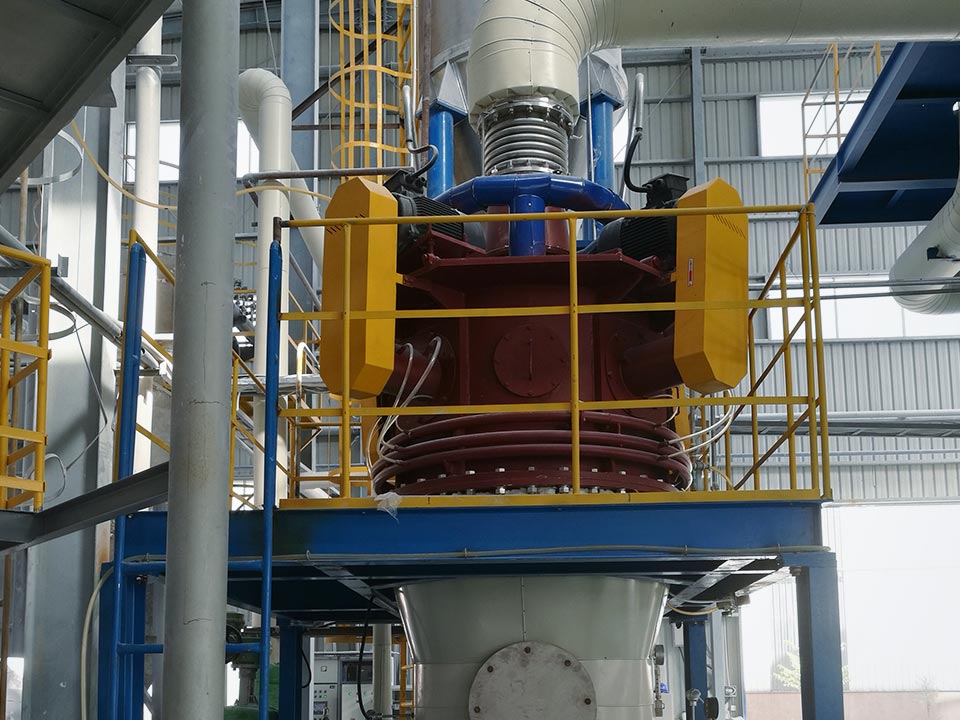
The jet mill is mainly composed of frame, upper box, middle box, lower box, feeding device, grading motor, main motor, rotor assembly and other components. The rotation of the rotor is obtained by the main motor driving the main shaft through the V-belt. The rotation of the grading wheel is achieved by the grading variable frequency motor driving the grading shaft through the coupling. The rotation of the classifier is opposite to that of the grinding disc. The elasticity of the V-belt is adjusted by the tightening bolts to adjust the center distance between the motor and the host, so that the V-belt is moderately tight. The rotor is mainly composed of a main shaft, a bearing seat, a bearing, a rotor, a grinding block, and a V-belt wheel. After the rotor is installed with grinding blocks, the dynamic balance is checked. The rotating speed of the grading impeller can be adjusted freely without stopping the machine, so that the graded product can reach the ideal fineness. The feeding device is mainly composed of hopper, auger, frequency conversion motor, reduction box and other parts. The amount of feed can be obtained by adjusting the speed of the frequency conversion motor, so that the load of the main motor is basically within the rated load range.
Since the rotor assembly and the grading impeller can be assembled after passing the dynamic balance verification, the vibration generated during operation is very small. The whole machine does not need foundation and foundation bolts to install. The rack only needs to be placed on a horizontal ground or supported by shock-proof pads. The position of the electric control cabinet and the host should not be too far away (except in special circumstances, such as grinding conductive materials, etc.). In this way, the load of the main motor can be observed, and the power supply can be cut off in time in case of danger.
The jet mill is used for ultrafine grinding in chemical, food, feed, medicine and intermediates, tobacco, pesticides (wettable powders), pigments, coatings, dyes, ceramics, pigments, colloids, non-metallic minerals and bioengineering industries (Such as calcium carbonate, magnesium oxide, aluminum hydroxide, cerium oxide, phenolic resin, α-starch, pentasodium, mica, etc.).
It is very important to master the operation process of the jet mill
Mastering the operation of the jet mill is very important to the jet mill itself, but many people are not very clear about the procedures of how to operate the jet mill safely, so we need to learn and understand.
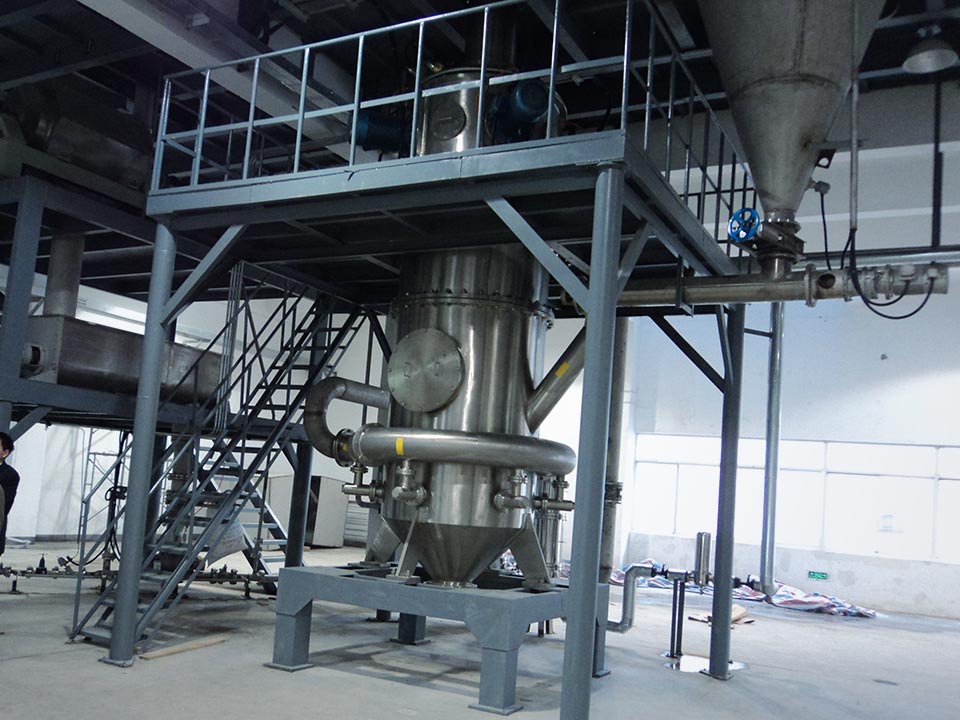
All circuits and electrical components of the jet mill should be checked to see if they can work normally. Whether the machine has been grounded, so as to avoid the risk of electric shock when the cabinet is electrified. Whether the machine spindle is stuck, if any, it should be dealt with in time. During the operation of the machine, whether there is any abnormality, stop and check immediately if any. Check whether the blade is tight and whether the blade gap can meet the specified standards. Before using the pulverizer, check whether there are sundries or sundries in the working room, and remove them in time.
Feeding can be started only after the crusher is operating normally. Before shutting down the crusher, stop feeding. Wait until the machine is completely discharged before stopping. Feeding should be even, not excessive, so as not to increase the burden on the machine. During the operation of the jet mill, cleaning, maintenance, etc. cannot be carried out.
The main reasons for the high oil temperature of the lubrication system are: (1) Abnormal wear on the surface of the friction disc or the oil groove; (2) The quality of the lubricating oil does not meet the requirements; (3) The cooling system does not play a cooling role; (4) Lubricating oil The flow is low.
The hydraulic cone crusher oil temperature protection range of the crusher is 21-54℃, beyond this temperature range, the main motor is tripped and powered off under the control of the oil temperature gauge. In summer, the temperature is high. Due to the heavy load, the oil temperature of the two crushed cone crushers is relatively high. After driving for a period of time, the oil temperature will approach or exceed 54°C. In order to protect the equipment, only manual shutdown or automatic tripping is required. After each trip, the internal friction surface needs to be cooled to a certain temperature before driving again. This results in multiple stops in a shift, which seriously restricts the production capacity of cone crushers and affects The improvement of the system efficiency, therefore, the transformation of the cooling system is imperative.
Through analysis and transformation, it can be achieved: reducing frequent opening and stopping caused by excessive oil temperature, and improving the production capacity and system efficiency of the cone crusher.
Cause analysis Due to the high temperature in summer and heavy load of cone crushing, the oil temperature of the lubrication system is too high, and the critical value of the oil temperature gauge tripping and power failure that often reaches or exceeds 54 ℃. This causes the system to start and stop repeatedly in a shift, which severely restricts The normal production capacity of cone crusher affects the improvement of system efficiency.
